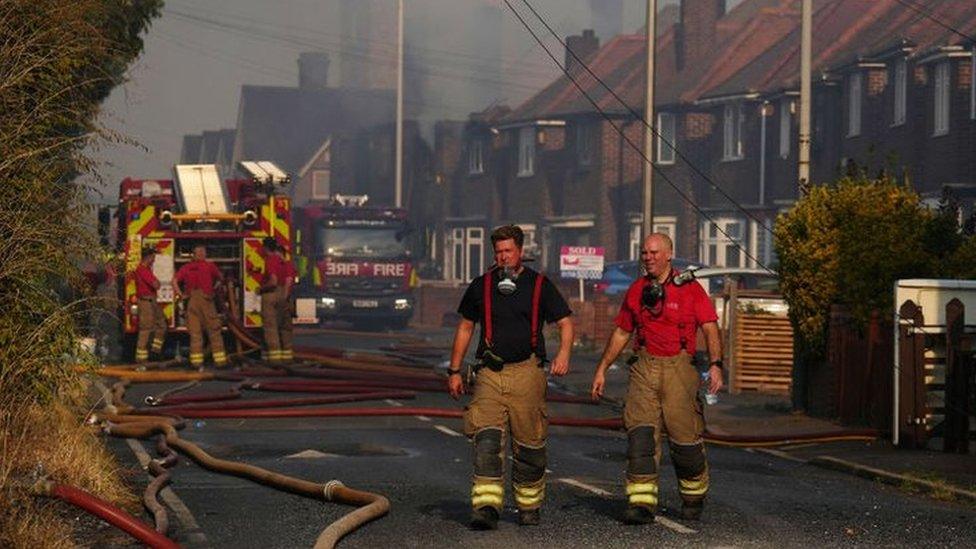Fire brigade response times across England highest in 10 years, data shows
- Published
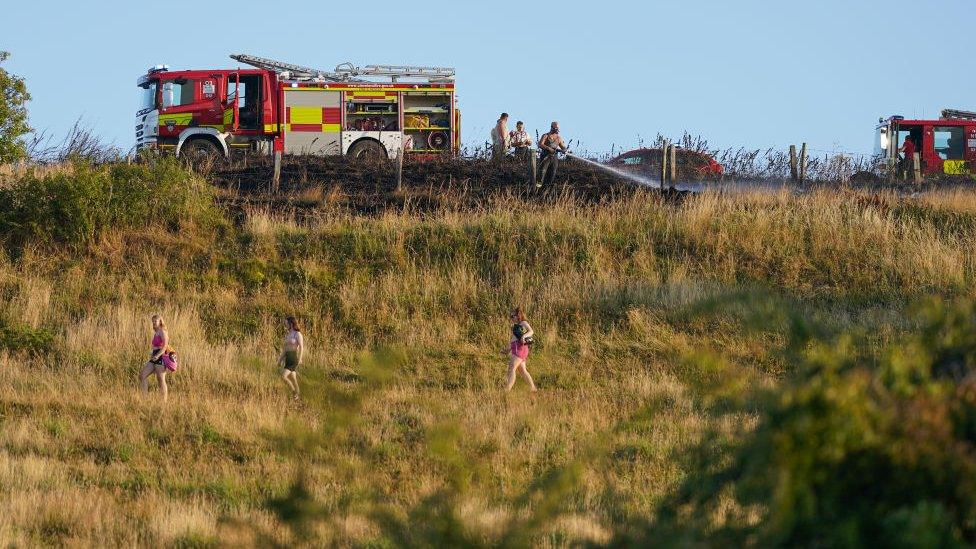
Fire crews tackle a crop fire that swept over farmland in Redcar and Cleveland, North Yorkshire, last year
The average response time for fire brigades to arrive at the scene has risen to a record nine minutes and 12 seconds across England.
This is an increase of more than a minute across the last 10 years, Home Office data analysed by the BBC shows.
Kent Fire and Rescue Service saw the highest rise, while Berkshire improved.
The government said fire services had to manage resources to meet core functions but the Fire Brigades Union (FBU) blamed the increase on cuts.
The number of firefighters has fallen from just over 44,000 in 2010 to about 35,000 in 2022, while staffed fire stations in England fell from 1,439 in 2010 to 1,390 in 2021, the data shows.
Rural response times tend to be longer due to larger distances to cover, however they have been deteriorating at a faster rate than those in urban areas, our analysis shows.
Those living in significantly rural areas saw times increase by nearly two minutes, while times in metropolitan areas increased by less than half a minute.
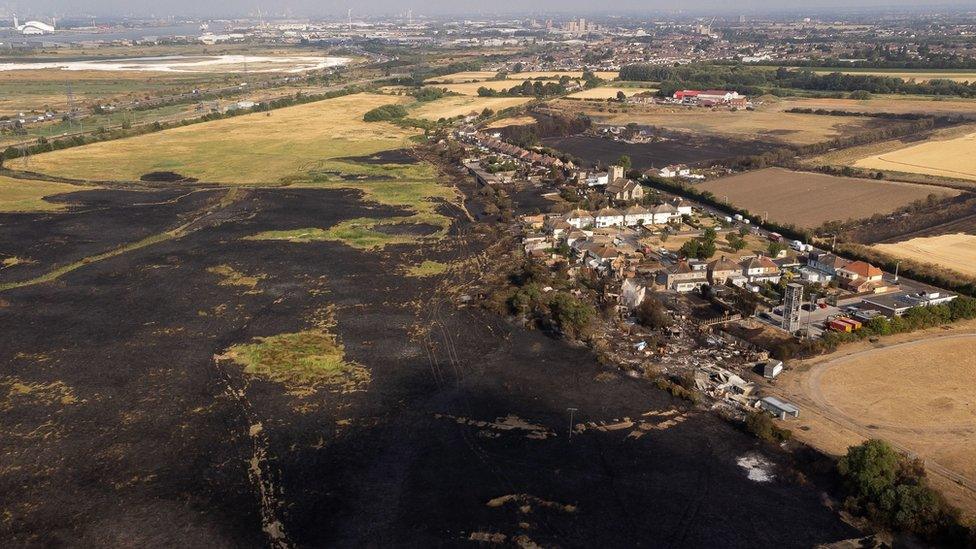
The fire scorched fields as well as destroying homes in Wennington in 2022
In the financial year ending March 2023, the number of fire incidents responded to increased by more than 25,000 to 178,737, the highest since 2019.
This is attributed to a 26% increase in secondary fires and a 45% increase in outdoor primary fires following the hot, dry, summer of 2022, compared with the previous year.
The data also shows:
Kent Fire and Rescue Service had the biggest increase of three minutes and five seconds from the financial year of 2012-13 to March 2023
North Yorkshire, predominantly rural, had the slowest average response time at 13 minutes and nine seconds, an increase of more than a minute in the last year alone and two minutes 38 seconds since 2012
Tyne and Wear Fire Service which, despite an increase of a minute over the 10 years, had the lowest average response time of six minutes and 43 seconds
London Fire Brigade (LFB) recorded the smallest increase of a second for the same time period
Royal Berkshire Fire and Rescue Service was the only fire service to have improved, decreasing its average response time for 2023 by 22 seconds.
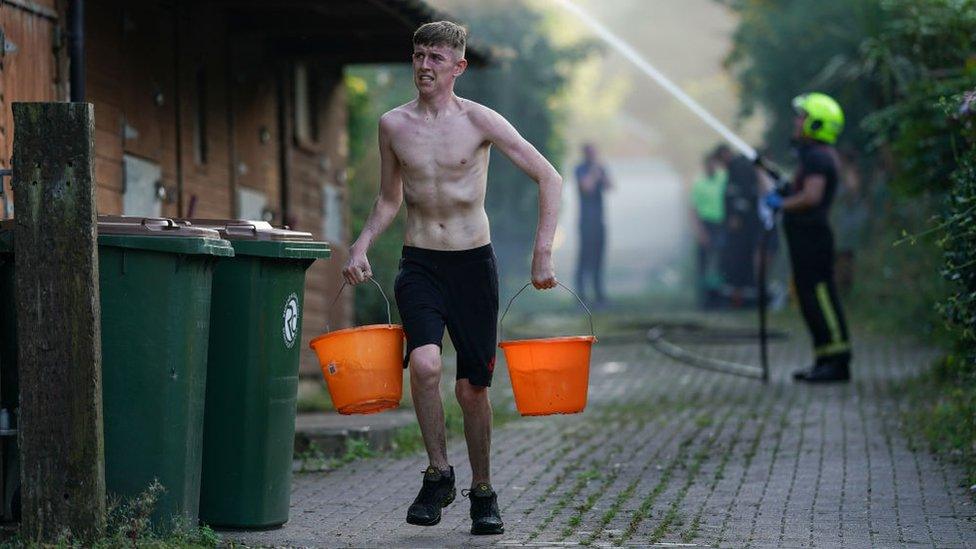
Residents ran to help firefighters tackle the crop farm blaze in Redcar and Cleveland
Matt Wrack, FBU general secretary, said firefighters had been "raising the alarm about the impact of losing one in five firefighter jobs for years".
"Now we've reached a dangerous point where fire response times are increasing dramatically. These latest figures must be a wake-up call for the government and chief fire officers."
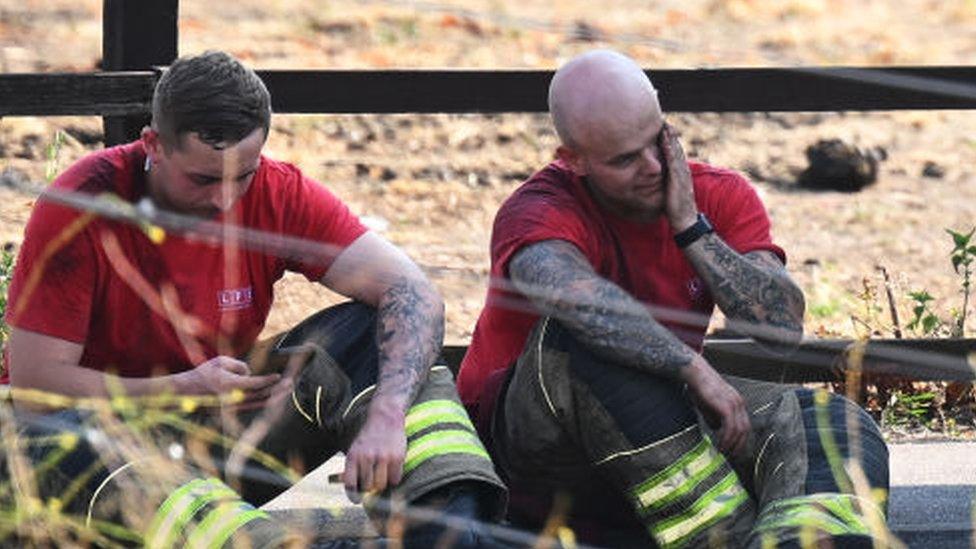
About 100 firefighters tackled the blaze in Wennington, east London, last summer
He said firefighters were being pushed beyond "acceptable and safe limits" by responding to incidents across increasingly large areas.
He added the climate emergency was resulting in more frequent and extreme weather events and wildfires.
"In several rural areas, chief fire officers are putting lives at risk by sending reduced crews out, below the numbers needed to fight a fire," he added.
"Even if they arrive quickly, firefighters then have to stand by and wait for another fire engine to arrive."
'No way to run a service'
London Fire Brigade's report into last summer's Wennington wildfire, which destroyed 19 houses, acknowledged 39 of the city's fire engines were unavailable that day due to cuts to firefighters, slowing response times.
At the time of the blaze, the brigade was also fighting numerous other blazes including one attended by 30 pumps in Upminster, east London.
The investigator said the brigade, which had a station less than 100m (328ft) from the site where the fire started in Wennington, would have sent more than 15 pumps were it not for the "unprecedented conditions".
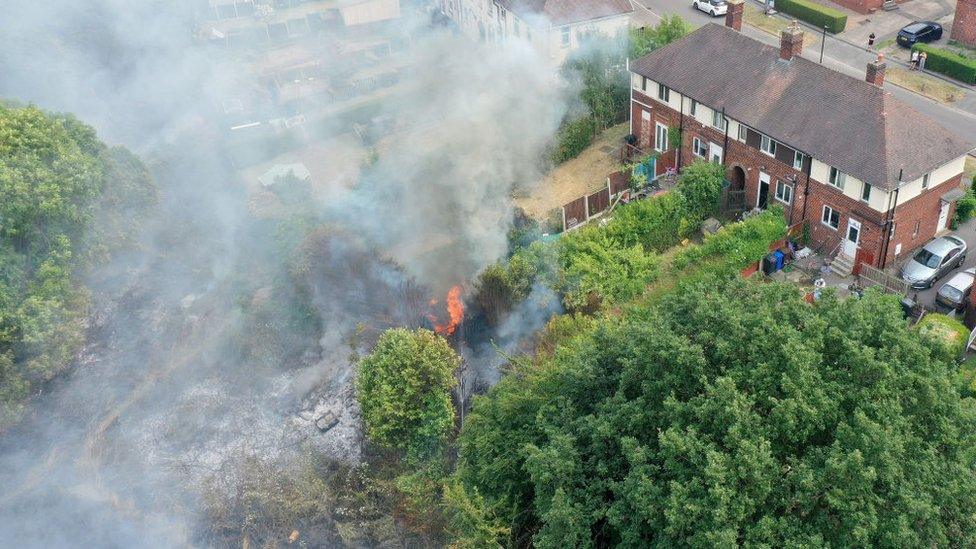
Last July firefighters fought a wildfire that encroached on nearby homes in the Shiregreen area of Sheffield
Mark Rist, director for response at Kent Fire and Rescue Service, said increasing congestion on the roads was having an impact however the "outcome of a fire doesn't always depend on the speed of a fire engine".
He said the brigade had invested in making sure its firefighters were "highly skilled, with technical competence and understanding of incidents" so they were "efficient on the scene".
"The landscape we're operating in has changed, and the range of incidents we're now attending is more diverse," he added.
Hot temperatures
Damian Henderson, area manager for North Yorkshire Fire, said the service covered one of the largest rural patches in the country but had a similar number of fire stations as much smaller areas.
He added last year's hot temperatures sparked farm fires, often in the most remote parts of the county, which contributed to higher response times.
He added he wanted to "offer reassurance" that it always attended incidents as "quickly as possible" and that it reviewed primary fires where the response time was above average to see if improvements could be made.
A Home Office spokesperson said the government was "committed" to ensuring fire services have the resources they need.
Overall fire and rescue authorities will receive around £2.6 billion in 2023-24.
"Decisions on how their resources are best deployed to meet their core functions are a matter for each fire and rescue authority," the spokesperson added.
- Published13 July 2023
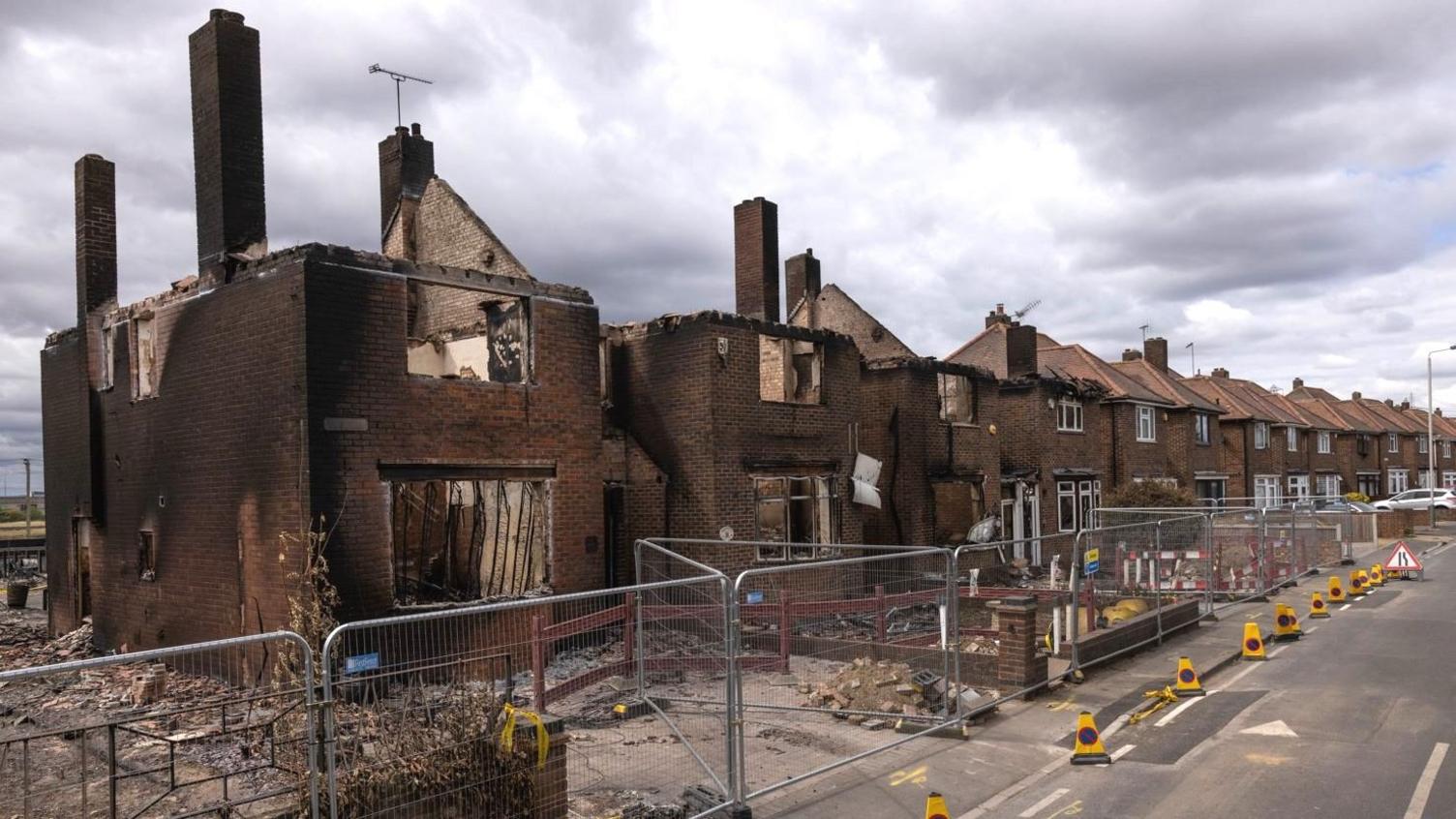
- Published9 January 2023

- Published20 July 2022
